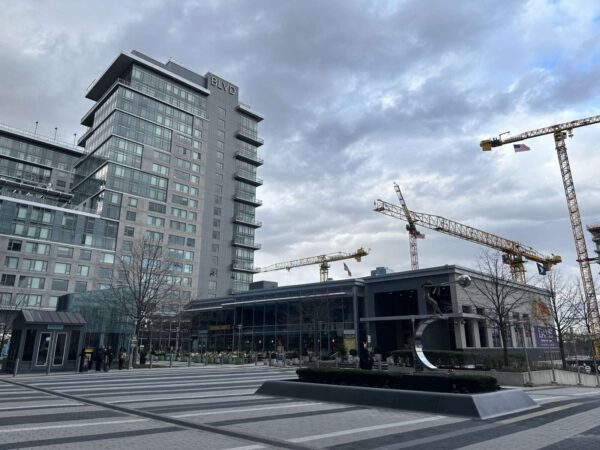
Growth in Fairfax County is focused in Tysons, the Dulles Suburban Center and other mixed-use areas.
In addition, growth in multifamily housing units outpaced growth in single-family housing between 2010 and 2023, and office space continues to lead the way in non-residential development potential, county staff said in a presentation at the Fairfax County Planning Commission’s policy plan committee meeting on July 13.
Development in mixed-use “activity centers” like Tysons, the Dulles Suburban Center, the Reston Transit Station Areas and the Richmond Highway Corridor lines up with the concept for future development outlined in the Fairfax County Comprehensive Plan.
“The plan has a lot of flexibility built in now and plenty of options for new residential development to occur,” Andrea Dorlester, the county’s principal planner, said in the presentation.
The presentation served as a preview of a “State of the Plan” report that will provide a progress update on the county’s planning efforts between January 2011 and December 2022. Building off a similar evaluation from 2012, the report is slated for release at the end of the summer.
The county can support residential growth through at least 2045, according to the comprehensive plan and a forecast from the Metropolitan Washington Council of Governments.
Overall, the comprehensive plan notes potential for 182,000 additional dwelling units, with 91% of those units being multifamily housing. The MWCOG forecast projects an 80,000-unit increase by 2045, per the presentation.
At the meeting, Braddock District Commissioner Mary Cortina noted that addressing affordability in housing is challenging.
“We know we have a housing problem, we say we have growth, but what is being built is not necessarily addressing affordability,” Cortina said.
Between January 2011 and December 2022, the majority of amendments to the comprehensive plan added to planned new housing.
“Several site-specific plan amendments serve to provide for affordable housing, affordable housing for seniors [and] assisted living,” Dorlester said. “And there were some notable conversions from commercial to planned residential with new planned townhouse neighborhoods replacing portions of old strip shopping centers.”
Dranesville District Commissioner John Ulfelder asked whether permitting a “missing middle” approach like the one adopted by neighboring Arlington — where the county would allow some smaller multifamily units in areas that now only allow single-family housing — could provide an opportunity for additional residential growth.
That would require a policy change, but in the context of the State of the Plan, Fairfax County planner Clara Johnson said that with plan amendments, the county is seeing redevelopment of shopping centers and along major transportation corridors.
Adopted changes to the plan also reflect a transit-oriented approach, according to the presentation.
“In areas where transit is not available or planned, such as the downtown McLean Community Business Center, plan changes focused on improving walkability, creating new public spaces, implementing good urban design and creating bonus height or density incentives to promote revitalization and placemaking measures, such as provision of urban park spaces,” Dorlester said.

